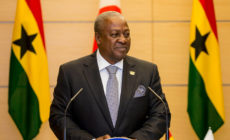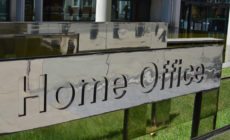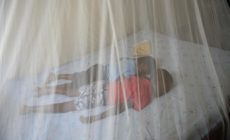Fitch warns Ghana over deteriorating debt situation
- Posted on
- Comment
 Credit ratings agency, Fitch Ratings has warned that Ghana’s fiscal and external deficits leave
Credit ratings agency, Fitch Ratings has warned that Ghana’s fiscal and external deficits leave
the country vulnerable to domestic and external shocks, including low oil prices and tight financing conditions.
It added that the result has been lower growth of 4.1% in 2015 and a public debt to Gross Domestic Product (GDP) ratio of 72%, well above the ‘B’ median of 47%.
Fitch forecasts that economic growth will increase to 5.4% in 2016 and that public debt will peak this year, saying downside risks remain.
The ratings agency, however, warned that fiscal slippage ahead of the November elections would increase inflationary and financing pressures.
In addition, it noted that a further decline in commodity prices would negatively impact growth and exacerbate Ghana’s twin deficits.
Consequently, Fitch affirmed Ghana’s long-term foreign and local currency Issuer Default Ratings (IDR) at ‘B’ with a Negative Outlook.
It also affirmed the issue ratings on Ghana’s senior unsecured foreign and local currency bonds at ‘B’, as well as the ‘BB-‘ rating on Ghana’s USD1bn partially guaranteed note.
Ghana’s Country Ceiling and the short-term foreign currency IDR have been affirmed at ‘B’.
Rating sensitivities
It explained that the main factors that individually, or collectively, could trigger negative rating action includes failure to consolidate the budget deficit and stabilise debt levels, or to ease domestic financing conditions.
The ratings agency also identified failure to stabilise international reserves, as well as failure to improve macroeconomic stability, in particular, to control inflation as other risks.
“The outlook is negative. Consequently, Fitch’s sensitivity analysis does not currently anticipate developments with a material likelihood, individually or collectively, of leading to an upgrade.
“However, future developments that may, individually or collectively, lead to a revision of the outlook to stable include continued progress on fiscal consolidation efforts that is consistent with debt peaking in 2016 and then declining”, it said.
According to Fitch, an improvement in Ghana’s external position, which includes a narrowing of the current account deficit and the rebuilding of the external reserves position, would be helpful.
Key assumptions
Fitch assumes that Ghana’s new oil production comes on stream towards the end of the forecast horizon, the continued development of the gold sector, and further investment in infrastructure.
Fitch assumes Brent oil prices will average $35 in 2016, $45 in 2017 and will rise gradually to USD65.
Fitch assumes an IMF programme remains in place through the 2016 elections.
According to Fitch, Ghana made significant progress on fiscal consolidation in 2015, narrowing the fiscal deficit to an estimated 7.2% of GDP, from 10.2% in 2014.
The fiscal reform agenda is supported by a $918m Extended Credit Facility arrangement with the International Monetary Fund (IMF), of which Ghana successfully concluded its second review in January.
The fund programme helped the government keep expenditures in line with a revised 2015 budget while earning revenues in excess of what was forecast in the budget.
The 2016 budget calls for a further narrowing of the deficit to 5.3% of GDP. However, Fitch believes that the narrowing will be smaller and forecasts a 2016 fiscal deficit of 6.3%.
The 2016 growth outlook is dependent on a combination of domestic and external factors.
Domestically, oil and gas production will increase as the Tweneboa, Enyenra and Ntomme oilfields come online in August and add 23,000 barrels per day in oil production and associated gas exploitation will bring an approximate 50% increase in gas production.
Externally, lower global commodity prices, notably oil and gold, would damage export receipts. Downward pressure on the exchange rate and overall FX volatility has also served to dampen growth and increase external pressure.
8% Cedi depreciation forecast
In Fitch’s view, the Ghanaian cedi will experience greater stability in 2016 and lower levels of depreciation.
The agency expects the cedi to trade at an average exchange rate of GH?4.1 to $1, representing a depreciation of about 8% from the 2015 average compared with the 22% depreciation that the cedi experienced in the previous year.
Tight monetary policy in 2016
In its most recent Monetary Policy Committee (MPC) meeting, the Bank of Ghana chose to keep the monetary policy rate at 26%, where it sits after five rate hikes in 2015.
The MPC noted that exchange rate stability had contributed to February, monthly inflation dropping slightly to 18.5%, from 19% in January.
Inflation expectations remain high and the current level is still well above the target band of 8+/- 2%.
For these reasons, Fitch expects the central bank to maintain a relatively tight monetary policy in 2016, which will be supportive of greater price and exchange rate stability.
Cedi’s fall hits assets of banks
The depreciating exchange rate has led to a deterioration in the asset quality of the banking sector.
Non-performing loans
The ratio of non-performing loans (NPL) to total loans increased from 11% in June 2015 to 14% by October.
Increasing NPLs are a risk, but overall, the banking sector remains liquid and well-capitalised.
Rating constrained by low GDP per capita
The rating is constrained by low GDP per capita, which at $1,313 is less than half the ‘B’ median.
However, the 7.2% annual growth rate that Ghana experienced in 2005-14 substantially increased the country’s performance on human development indicators.
By Elvis DARKO, Accra










 (Selorm) |
(Selorm) |  (Nana Kwesi)
(Nana Kwesi)